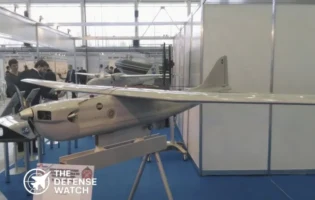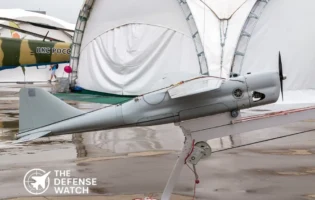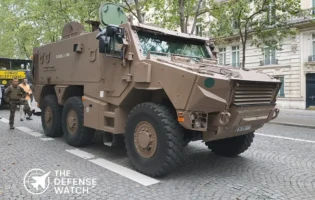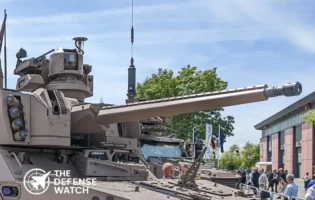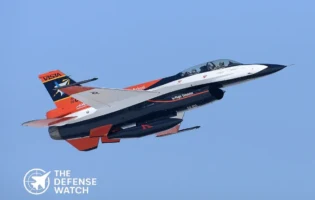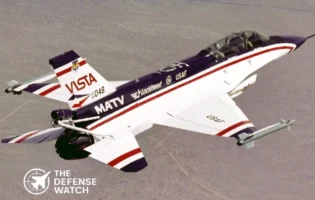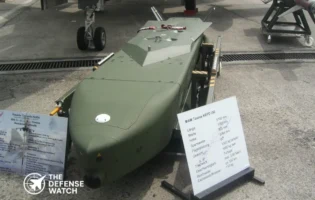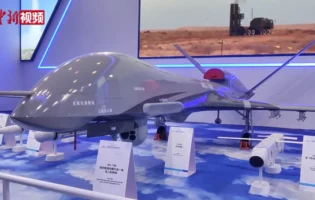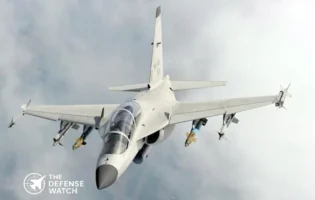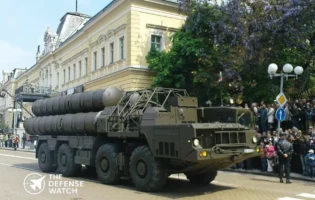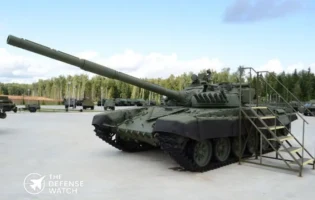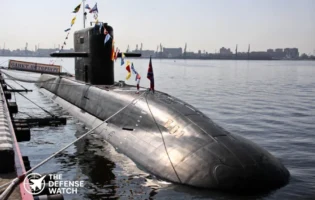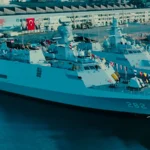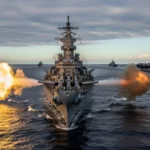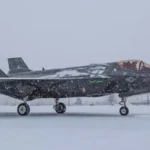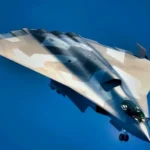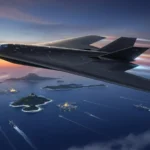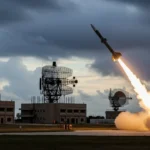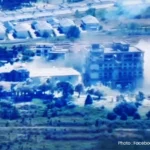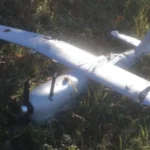B-21 Raider vs B-2 Spirit: A Strategic Bomber Comparison
When the United States’ most advanced long-range strike platforms go head to head, the comparison matters—not just for aviation enthusiasts, but for U.S. defence strategy, alliance commitments and global deterrence. The rivalry of **B‑21 Raider vs **B‑2 Spirit encapsulates a generational evolution in stealth bomber design. The B-2 emerged in the 1990s as a Cold-War era stalwart of nuclear deterrence; the B-21 is being fielded in the next decade to face new challenges including peer competitors such as Russia and China, and emerging integrated air-defence zones across the Indo-Pacific. The “B-21 vs B-2” discussion is therefore central to understanding how the U.S. Air Force (USAF) plans to execute long-range strike operations, nuclear deterrence and power projection in the 21st century.
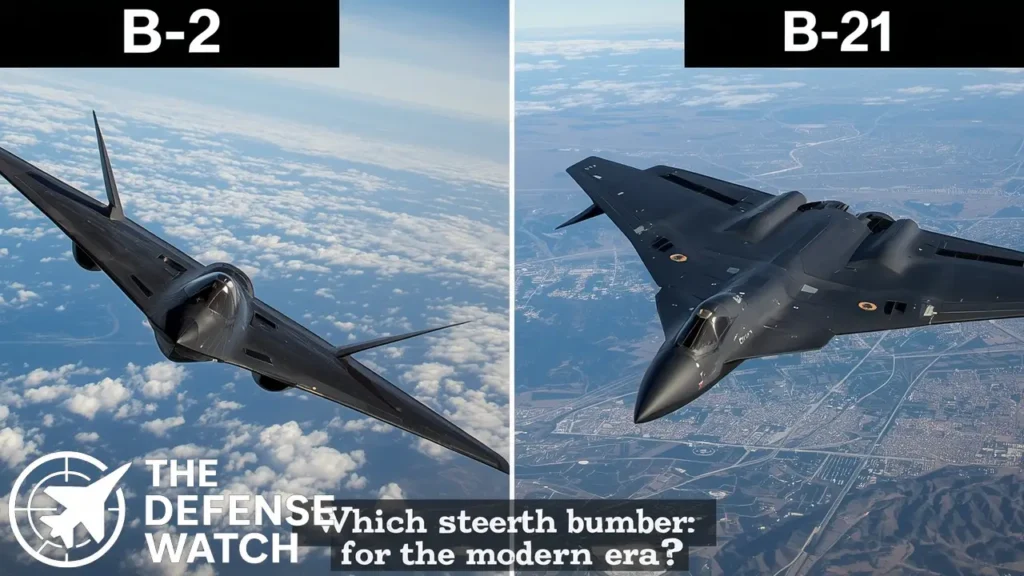
Design & Technology
Stealth & Low-Observable Features
The B-2 Spirit entered service as a revolutionary flying wing stealth bomber, aiming to penetrate the densest Soviet air-defence systems. Its flying-wing layout, lack of vertical stabilizers, specially contoured inlets and exhausts, and radar-absorbent material all contributed to a radar cross-section reportedly as low as 0.1 m² in favourable aspects. The B-21 Raider inherits the same general flying wing concept but is designed for a far more contested environment—one with advanced anti-access/area-denial (A2/AD) systems, high-frequency radars, sensors across multiple domains and longer-range precision strike vectors.
In particular, the B-21 emphasises an open-systems architecture, modular mission systems, reduced maintenance burden for stealth coatings, and potentially optionally-manned operations. By comparison, the B-2’s stealth coatings and maintenance demands are high and costly—a legacy challenge.
Sensor, Avionics & Network Integration
While the B-2 has been upgraded with modern sensors, communications and avionics, its core architecture dates to the 1980s/1990s. The B-21 is built for networked, multi-domain operations—designed to plug into the USAF’s Joint All-Domain Command & Control (JADC2) vision, enabling real-time data sharing across air, land, sea, space and cyber domains. This means the Raider is expected to have greater sensor fusion, connectivity, mission flexibility and upgrade potential than its predecessor.
Maintainability & Life-Cycle Efficiency
The B-2’s superb capability is tempered by high maintenance and sustainment costs—its stealth surfaces require careful upkeep, the aircraft is expensive to operate and the fleet size was limited by cost. In contrast, the B-21’s design places explicit emphasis on lowering cost per unit, reducing maintenance overhead, and using commercial-derived systems where practical. For the USAF, that means more ready aircraft, higher mission-capable rates and more sustainable operations.
Firepower & Performance
Weapons Loadouts & Munitions
The B-2 Spirit can carry a diverse mix of conventional and nuclear munitions. For example, it is capable of delivering guided bombs like the GPS-guided JDAM, 30,000-lb class bunker busters such as the GBU‑57 Massive Ordnance Penetrator (MOP), gravity bombs like the B61 and B83 nuclear bombs, and other heavy ordnance. Its >40,000 lb payload enables significant strike capacity against heavily defended or hardened targets.
The B-21 Raider is expected to carry at least comparable conventional and nuclear loads, but critically to accommodate future-generation weapons—hypersonic missiles, advanced standoff weapons, agile penetrators, and next-generation cruise missiles. Although the exact internal weapons bay capacity remains classified, the open architecture suggests future flexibility. According to some public estimates, the payload might be somewhat less than the B-2’s maximum (~30,000 lb), but offset by higher tech weapons and improved strike effectiveness.
Accuracy, Targets & Mission Types
Both aircraft can perform precision conventional strike missions and nuclear delivery. The B-2 has been used in conventional missions (e.g., Kosovo, Iraq, Libya), demonstrating real-world utility. The B-21 is being designed for both strategic nuclear deterrence (including the upcoming LRSO cruise missile) and high-end conventional penetration strike missions in contested environments. The evolution means that in modern high-threat air space the B-21 is expected to have greater survivability, better stand-off weapon integration and more flexible sortie generation.
Operational Range & Mobility
Range and mobility matter in a globalised threat environment. The B-2 has an unrefuelled range of around 6,000 nautical miles (≈11,000 km) and with aerial refuelling can extend to ~10,000 nmi. That allows the USAF to strike from U.S. bases to deep into adversary territory—critical for both nuclear and conventional deterrence across Europe, the Pacific and other theatres.
The B-21, while exact figures remain classified, is estimated to have equal or greater range, and efficiency improvements (lighter weight, newer engines, higher bypass thermals) suggest longer endurance and more loiter time. Some sources estimate ~12,000 km or more. The Raider’s planned basing, mobility and readiness are tailored for dispersed forward operations, basing within allied territory, rapid deployment and increased sortie generation—key advantages in Indo-Pacific or NATO/A2-AD contexts.
Combat Effectiveness
Real-World Use & Doctrine
The B-2 Spirit has seen operational employment in conventional combat, demonstrating its ability to deliver precision long-range strike bombs in defended airspace. It remains an icon of strategic deterrence and power-projection. Its status in U.S. doctrine is as an element of the nuclear triad (air leg) plus conventional global strike.
The B-21 Raider, not yet fully operational as of this writing, is planned to become the backbone of the USAF’s bomber force, working in tandem with the older B-52s and replacing both B-2 and some B-1s. It is explicitly designed for high-end threat environments—integrated air-defence systems, long-range strike requirements, contested Indo-Pacific basing scenarios and dynamic deterrence competition with great-power rivals. The scale (100+ aircraft) improves flexibility, readiness and global deterrence options.
Readiness, Survivability & Fleet Size
The B-2’s cost and maintenance have constrained fleet size and sortie rate. Only 21 built; after accidents and retirements fewer remain operational. The B-21 is designed with scale in mind and lower life-cycle cost; larger numbers means redundancy, improved readiness, and distributed basing. That improves survivability in a contested environment. The open architecture and modular upgrades also promise longer useful life.
Cost & Export Value
Unit Cost & Procurement
The B-2’s unit cost soared during development; when adjusted to modern dollars, each aircraft cost over $2 billion. The high cost directly limited procurement to 21 units. By contrast, the B-21 is being developed with a target unit cost ~US$550-800 million, making a larger fleet more affordable. Still, the program has faced financial stresses: e.g., Northrop Grumman reported unexpected manufacturing cost increase for the B-21.
Export Potential & Geopolitical Impact
Historically the B-2 was not exported; it remains USAF-only, limiting its geopolitical export value. The B-21’s potential for allied integration (though export policy remains sensitive) and role in global deterrence means the program has significant geopolitical weight. A fleet of 100+ bombers signals to adversaries and allies alike that the U.S. plans long-term strategic dominance in the bomber domain. The cost difference also means greater numbers, better allied burden-sharing, and a more flexible presence globally.
Operational Cost & Sustainment
Lower structural and maintenance burden on the B-21 is intended to reduce operational cost per flight hour, increase mission-capable rates and ease sustainment—an important factor given global deployment requirements. The B-2, while highly capable, carries the legacy cost burden of its era.
Analysis: Strengths & Weaknesses
Strengths
- B-2 Spirit: Proven platform, excellent stealth capabilities for its time, strategic heritage, nuclear and conventional role already validated.
- B-21 Raider: Next-generation design, built for modern contested environments, improved maintainability, larger planned fleet, networked operations and future weapons integration.
Weaknesses
- B-2 Spirit: High operating cost; smaller fleet size limits redundancy; ageing design architecture; limited ability to integrate future weapons as easily.
- B-21 Raider: Still under development; many details classified so some capability estimates are projections; initial unit cost and production ramp-up still challenging; export and allied basing frameworks still to mature.
U.S. Military Viewpoint
The U.S. Air Force views the B-2 as a legacy pillar of strategic bomber force but recognises it must be succeeded by the B-21 to maintain credible deterrence in the face of evolving adversary air-defence capabilities. The B-21 is projected to become the backbone of the bomber fleet into mid-century. From a doctrinal viewpoint, the B-21 offers more scalable options, future-proofing, and distributed deterrence, whereas the B-2 remains a high-cost premium asset.
Conclusion
In the “B-21 Raider vs B-2 Spirit” comparison the verdict depends on context:
- If you ask which system is battle-proven today, the B-2 Spirit has the edge—its operational history and validated capability speak for themselves.
- If you ask which system offers superior future relevance, scalability and readiness in contested‐environments, the B-21 Raider is likely to take the lead.
In short: For missions today in relatively permissive or semi-contested airspace, the B-2 remains formidable. For tomorrow’s fights—long-range strike into denied zones, integration with multi-domain networks, and evolving weapons—the B-21 is designed to take over. The U.S. defence community is thus wisely treating the two bombers not as direct rivals, but as sequential components of a strategic bomber continuum: the B-2 underpins current capacity; the B-21 will sustain relevance for decades to come.
FAQs
In short: the B-21 is a newer, more network-capable and maintainable stealth bomber designed for the modern contested environment; the B-2 is a proven but older platform with higher cost and fewer numbers.
The B-2 has a larger wingspan (~172 ft) and higher maximum take-off weight (~336,500 lb), payload >40,000 lb and unit cost ~US$2 billion. The B-21 is somewhat smaller (estimated wingspan ~132-140 ft), designed payload around ~30,000 lb+, unit cost targeted ~$550-800 million, with architecture for future upgrades.
If “winning” means future‐proof long-range strike in a high-threat contested environment, the B-21 has the edge. If “winning” means proven track record today, the B-2 still retains value. The real answer: Both have roles and the USAF will use them in tandem rather than one eliminating the other.
Yes—that is the intention. The USAF plans to acquire at least 100 B-21s to replace the B-2 (and some B-1s) and to form the long-range bomber core for decades ahead.
It signals how the U.S. is shifting from legacy platforms to more scalable, upgradeable systems that can operate in contested environments with peer adversaries. For allies and potential adversaries alike it is a clear signal of U.S. long-range strike intent and capability.


|
|
| Price | |
| Our Rating | |
| Manufacturer | Northrop Grumman Northrop Grumman |
| Category | Bombers & Strategic Aircraft Bombers & Strategic Aircraft |
1. General Information
| Name | B-21 Raider B-2 Spirit |
| Manufacturer | Northrop Grumman Northrop Grumman |
| Country of Origin | United States United States |
| Introduction / In Service Since | Expected 2027 1997 |
| Status | Pre-production / Testing Active |
| Category | Long-range stealth bomber Strategic Stealth Bomber |
| Crew | 2 2 |
| Unit Cost | Approx. $700 million (estimated) Approx. $2.1 billion (2024 est.) |
2. Dimensions & Structure
| Length | ~69 ft (estimated) 69 ft (21 m) |
| Wingspan | ~137 ft 172 ft (52.4 m) |
| Height | ~20 ft 17 ft (5.1 m) |
| Wing Area | Classified 5,140 sq ft (478 m²) |
| Empty Weight | Classified 158,000 lb (71,700 kg) |
| Maximum Takeoff Weight (MTOW) | ~150,000 lb (estimated) 336,500 lb (152,200 kg) |
3. Performance
| Maximum Speed | 600+ mph (est.) 628 mph (Mach 0.95) |
| Range | 6,000+ miles 6,000+ nmi (11,000 km) |
| Combat Radius | ~2,500 miles 2,500 nmi (4,600 km) |
| Service Ceiling | ~50,000 ft 50,000 ft (15,000 m) |
| Rate of Climb | Classified Classified |
4. Powerplant
| Engine Type | 2 × Pratt & Whitney (classified model) 4 × GE F118-GE-100 turbofans |
| Thrust (per engine) | Estimated 17,000–19,000 lbf 17,300 lbf |
| Total Thrust | ~34,000–38,000 lbf 69,200 lbf |
5. Payload & Armament
| Internal Payload Capacity | ~30,000 lb 40,000 lb (18,000 kg) |
| Weapons Bay | 2 internal bays Dual internal bays |
| Compatible Weapons | Nuclear gravity bombs, JASSM-ER, hypersonic missiles B61/B83 nuclear bombs, JDAMs, GBU-28 |
| Hardpoints | None (stealth configuration) None (internal only) |
6. Avionics & Systems
| Radar System | Advanced AESA radar AN/APQ-181 multi-mode radar |
| Navigation | GPS/INS hybrid GPS-aided INS |
| Electronic Warfare (EW) | Full-spectrum self-protection AN/ALQ-214 suite |
| Stealth Features | Radar-absorbent coatings, low IR signature RAM coating, flying-wing design |
7. Operational History
| Primary Operator | United States Air Force United States Air Force |
| Conflict Usage | None (testing phase) Kosovo, Iraq, Afghanistan, Libya |
| Notable Missions | Initial test flights, 2023–present Operation Allied Force (1999) |
8. Additional Information
| Variants | None confirmed B-2A Spirit |
| Successor / Future Replacement | Future unmanned strategic bomber concepts B-21 Raider |
| Notable Features | AI-assisted systems, modular avionics Stealth coating, long-range endurance |
| Estimated Operational Life | 2050+ Until 2035 |


|
Disclaimer Note
The information provided on TheDefenseWatch.com is for general informational purposes only. While we strive to ensure the accuracy, completeness, and timeliness of our content regarding defense and aerospace products, technologies, and specifications, we cannot guarantee that all information is 100% accurate or up-to-date due to the evolving nature of military technology and classified data. TheDefenseWatch.com does not warrant the reliability, suitability, or availability of the information for any specific purpose. Users are advised to consult official sources, such as manufacturers, government publications, or defense agencies, for precise and verified data before making decisions based on our content. We are not affiliated with any defense manufacturers, governments, or military organizations mentioned. Opinions, reviews, and ratings reflect expert analysis but are subjective and should not be considered endorsements. TheDefenseWatch.com is not responsible for any errors, omissions, or consequences arising from the use of this website’s content. External links are provided for convenience and do not imply endorsement. TheDefenseWatch.com reserves the right to update or modify content without prior notice. By using this website, you agree to our Privacy & Cookies Policy.

